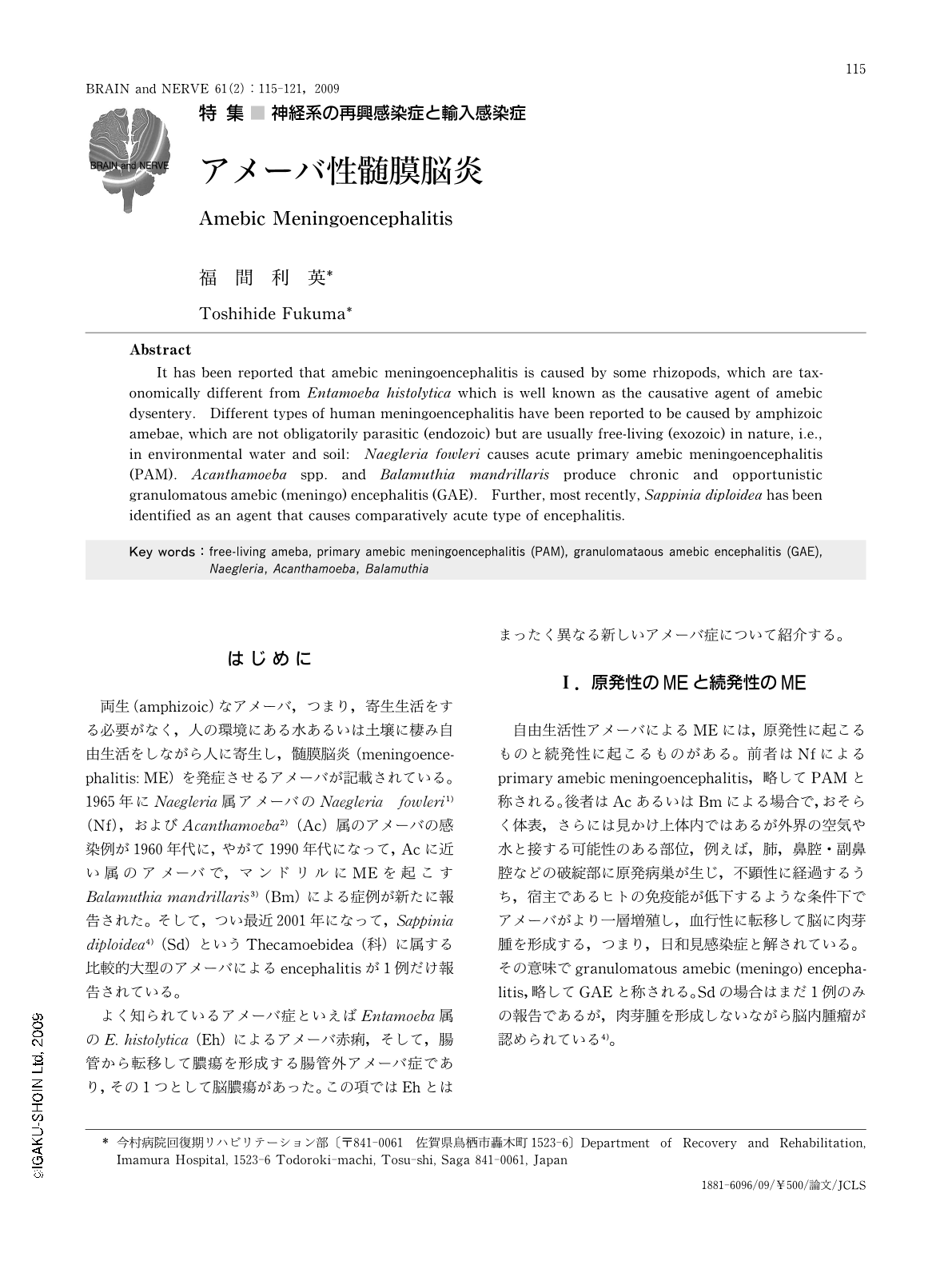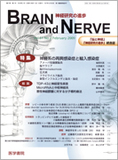Japanese
English
- 有料閲覧
- Abstract 文献概要
- 1ページ目 Look Inside
- 参考文献 Reference
はじめに
両生(amphizoic)なアメーバ,つまり,寄生生活をする必要がなく,人の環境にある水あるいは土壌に棲み自由生活をしながら人に寄生し,髄膜脳炎(meningoencephalitis: ME)を発症させるアメーバが記載されている。1965年にNaegleria属アメーバのNaegleria fowleri1)(Nf),およびAcanthamoeba2)(Ac)属のアメーバの感染例が1960年代に,やがて1990年代になって,Acに近い属のアメーバで,マンドリルにMEを起こすBalamuthia mandrillaris3)(Bm)による症例が新たに報告された。そして,つい最近2001年になって,Sappinia diploidea4)(Sd)というThecamoebidea(科)に属する比較的大型のアメーバによるencephalitisが1例だけ報告されている。
よく知られているアメーバ症といえばEntamoeba属のE. histolytica(Eh)によるアメーバ赤痢,そして,腸管から転移して膿瘍を形成する腸管外アメーバ症であり,その1つとして脳膿瘍があった。この項ではEhとはまったく異なる新しいアメーバ症について紹介する。
Abstract
It has been reported that amebic meningoencephalitis is caused by some rhizopods,which are taxonomically different from Entamoeba histolytica which is well known as the causative agent of amebic dysentery. Different types of human meningoencephalitis have been reported to be caused by amphizoic amebae,which are not obligatorily parasitic (endozoic) but are usually free-living (exozoic) in nature,i.e.,in environmental water and soil: Naegleria fowleri causes acute primary amebic meningoencephalitis (PAM). Acanthamoeba spp. and Balamuthia mandrillaris produce chronic and opportunistic granulomatous amebic (meningo) encephalitis (GAE). Further,most recently,Sappinia diploidea has been identified as an agent that causes comparatively acute type of encephalitis.

Copyright © 2009, Igaku-Shoin Ltd. All rights reserved.


